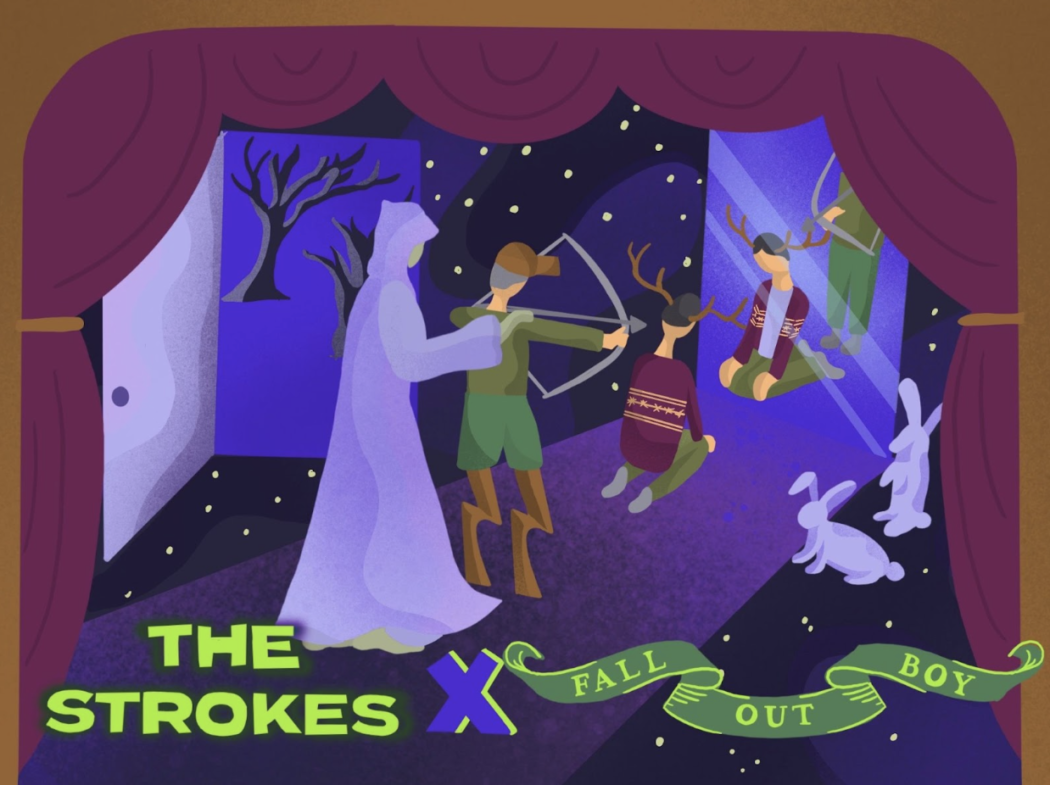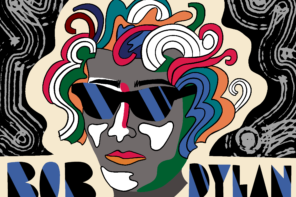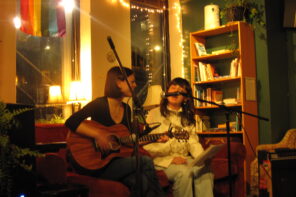How does a music video elevate a song or album? On a surface level, music videos add a visual element to songs that can bring out secondary artistic themes and messages. They allow artists to express themselves and to hint at the underlying themes of their work while creating room for additional rhetorical analysis. Other times, music videos provide a new outlook on the meaning of a song, or even present a completely unrelated storyline that works in its own right. “At the Door” by the Strokes is a prime example of the former, and “Sugar We’re Goin’ Down” by Fall Out Boy expertly pulls off the latter.
Music videos can be both extensions and reflections of the song lyrics they represent as well as distinct film productions that utilize music in a more emotional and visceral way
The Strokes’ open-ended, mysterious lyrics in “At the Door” (and several of their other songs) allow for ideological extension within a music video, and The Strokes have taken advantage of this opportunity as their music has evolved. Many of their earlier music videos simply involved recordings of the band performing, and while these videos certainly included some intentional cinematographic choices, they didn’t necessarily expand upon the lyrics or give additional meaning to them through visual cues. In The Strokes’ most recent album, The New Abnormal, the band curated a more artistically ambitious vision through their music videos, and “At The Door,” the sixth track on the album, is perhaps the magnum opus of these videos.
The “At the Door” music video weaves together four different but related storylines. Animated in a style reminiscent of the adventure-based television and film storylines of the 70s and 80s, with references to Watership Down and other animated media, “At the Door” introduces a dreamy, nostalgic setting that sets the stage for the immersive metaphor of the titular door.
The video begins with a young boy in a suburban home who appears unhappy with his life. He looks toward his family’s front door to find a shadowy, grim-reaper-like figure waiting for him, surrounded by the gloomy purple backdrop of the outside world. After this opening scene, viewers are introduced to three separate worlds. In one, a group of rabbits flees from a mutated diseased rabbit with a pension for blood. The next storyline involves a dystopian society where an intergalactic heroine fights for survival against the evil tyrant creatures holding her in captivity. Finally, a transcendent group of aliens marches along a celestial walkway in space toward an unknown entity. The mysterious black hole that appears in each storyline connects these characters and represents “the door,” which I interpret as a symbol of death – or more specifically, the simultaneously terrifying and comforting dualistic relationship between the concepts of death and release.
Each of these storylines handles death differently – the young boy grapples with his home life and fears his abusive father, turning to the door as a potential escape. These hints of suicidal tendencies portray death as a scary but tempting entity for the young boy, who finds himself in a purgatorial no-man’s land between life and death as he confronts and fights his trauma.
In contrast, the rabbits’ version of death is purely corporeal and fear-based – the infected rabbit’s virus manifests itself physically and grotesquely, and the healthy rabbits literally and figuratively run from death, clawing their way through obstacles as they back into a cave, eventually finding themselves at a dead-end.
Elsewhere in the cinematic universe, the heroine fights for her own life, but also for the greater good. Eventually, she sacrifices herself to destroy the evil creatures’ life source and blow the dystopian planet to smithereens. She embraces death as a means to an end and uses death as a weapon of justice, but her death is still unwanted; she simply meets her demise out of necessity with the fate of civilization on the line.
The aliens stray from the traditional path, existing in some sort of vacuum separate from traditional time and space – they churn towards the black hole in its purest extraterrestrial form, completing their mechanical procession in hyper-specific fashion as they voluntarily, or at least acceptingly, approach the edge of their physical world. As the other members of their kind look on from the heavenly bleachers beside the star-studded walkway, the aliens carry out their ritualistic interaction with death, displaying to viewers a perspective on life and loss that eliminates emotion entirely.
Animated in a style reminiscent of the adventure-based television and film storylines of the 70s and 80s, with references to Watership Down and other animated media, “At the Door” introduces a dreamy, nostalgic setting that sets the stage for the immersive metaphor of the titular door
The music video closes ambiguously, with each character or group confronting their respective “doors” – the young boy cements himself as the story’s main character as we return to his house, which now looks decrepit and worn, showcasing a different color scheme than in its previous appearance. He stands at the door, shadow looming, uncertain if he should step in. After revisiting the rabbits, who scamper deep into their ominous cave, the video closes with a still shot of the boy’s room. A wrinkle of light in the center of the room expands into a full-blown utopian society, and the meaning here is open to several interpretations. To me, the beautifully constructed utopia represents the other side of the door, and the knowledge of what takes place after life. And yet, nobody inhabits this utopia – at least nobody that we can see. On the mortal side of this universe, we can never truly know what lies on the other side of the door. We can hypothesize as much as we want, but the consequences of holding out hope for this dreamy half-reality are evident in the young boy’s room, which has crumbled into a state of pure disarray and depression.
Fall Out Boy differs from The Strokes in several obvious ways, but both bands have a distinctive passion and talent for utilizing the music video as a medium of expression. Fall Out Boy has always done this. Since the humble beginnings of Fall Out Boy’s rise to fame as a punk rock band with emo and pop undertones, guitarist and songwriter Pete Wentz has always been a believer in the power of the music video. As the band’s music changed over time, their music videos changed stylistically, but the creativity and depth of these videos remained constant. In 2014, Wentz commented on Fall Out Boy’s longform film project The Youngblood Chronicles, a nearly hour-long film directed by Adam Donald and Andrew Zaeh that consists of a series of eleven music videos intertwined by a single storyline and creative vision. Wentz stated that Fall Out Boy “[doesn’t] have any throwaway videos,” a claim that is easily backed up by the plethora of unique and meaningful music videos that the band has released consistently for each component of their lengthy discography. “Sugar We’re Goin’ Down” is no exception.
“Sugar We’re Goin’ Down” uses its music video to tell a story that is rather tangential to the actual lyrics of the song and the themes of the album, From Under the Cork Tree, and somehow, it works perfectly
The premise of the “Sugar We’re Goin’ Down” music video centers around the trope of the ‘father versus daughter’s boyfriend dynamic’ – with one catch: the boyfriend in question is part human, part deer. Throughout the video, we see the father angrily observe his daughter’s relationship, looking on disapprovingly and shooing away the boyfriend at every chance he gets. The video is cut strategically with shots of Fall Out Boy performing the song, which allows for well-placed breaks between the storytelling action of the video. Fitting perfectly into the crotchety, disapproving dad archetype, the father lashes out at the boyfriend without obvious reason, other than that this young man is dating his daughter, and perhaps due to the fact that he is half-deer as well. As the song’s bridge and breakdown arrive, the father has reached his wits’ end and pulls out a hunting bow, standing in the middle of the road and taking aim at the boyfriend. The boyfriend attempts to warn him, but suddenly, a pickup truck bulldozes the father.
At this point in the video, the message seems clear: the father should not disapprove of this nice young man dating his daughter solely because the man is half-deer. He holds an outdated and biased view, and he is punished accordingly when he is hit by the pickup truck. Then, Fall Out Boy completely pulls the rug out from under their viewers. Shaken, the boyfriend attempts to help the father, and he is stunned to find out that, as evidenced by the father’s now-exposed legs, the father is also half-deer. As the song fades out, we are rewarded with a pleasant closing scene in which the boyfriend and his girlfriend walk past the father, who greets them kindly and demonstrates full approval of the relationship. The father peacefully whittles while sitting in his front yard, deer legs exposed comfortably to the world.
While much of this video revolves around the father’s glaring disapproval of the boyfriend, “Sugar We’re Goin’ Down” is not an outright criticism of this overprotective “fatherly gaze.” Fall Out Boy is very intentional in the pacing of the storyline and ensures that viewers do not fully demonize the father prior to the plot twist at the end of the video. Although at first, it appears that the father disapproves of the boyfriend because he is half-deer, this ends up being as far from reality as possible. If anything, the father sees himself in the boyfriend and loathes the boyfriend because he is insecure about this part of himself, which is evidenced by the father’s hiding of his deer legs. The boyfriend is fully comfortable with himself, and this intimidates the father, who pushes the boyfriend away from his daughter as a result.
Only when faced with a near-death situation does the father see his faults. The boyfriend, who has no reason whatsoever to treat the father with kindness and care, attempts to help the father without having any knowledge of the father’s true identity as another half-deer. After the father has explicitly made an attempt to take the boyfriend’s life, the boyfriend still offers to help. In doing so, the boyfriend proves his good-heartedness to the father and shows him that he was never really a reflection of the father’s younger self. When the boyfriend discovers the father’s deer legs, he seems to gain an understanding of the father’s perspective – this mutual understanding that the two now share allows them to repair their relationship without a single spoken word, and after seeing the entire story through the boyfriend’s eyes, viewers are treated to the father’s perspective in the closing shot. Ultimately, we let go of all resentment we hold for the father, just as the boyfriend does. Viewers instinctively dislike the father for judging a ‘book by its cover,’ but we gradually realize that we have been judging the father by his ‘cover’ the entire time.
“Sugar We’re Goin’ Down” uses its music video to tell a story that is rather tangential to the actual lyrics of the song and the themes of the album, From Under the Cork Tree, and somehow, it works perfectly. It is a fantastic example of how the music itself can be used as a medium of expression for film in its own right, showcasing an inverse relationship to the one we see in “At the Door.” Music videos can be both extensions and reflections of the song lyrics they represent as well as distinct film productions that utilize music in a more emotional and visceral way, even if no connection exists between the lyrics of the song and the plotline of the video.
***
Music videos serve different purposes for different artists, and they exist in a peculiar liminal space between music and film – two forms of entertainment that complement each other extremely well. Although there are certain elements that have the potential to make a music video more visually pleasing and interesting to watch, there is no “formula” for a great music video. Within the music video medium, there exists immense potential for artistic expression that music and film on their own simply cannot achieve. The Strokes and Fall Out Boy regularly appreciate and execute upon this potential.
***
Graphic by Annette Archaeni








